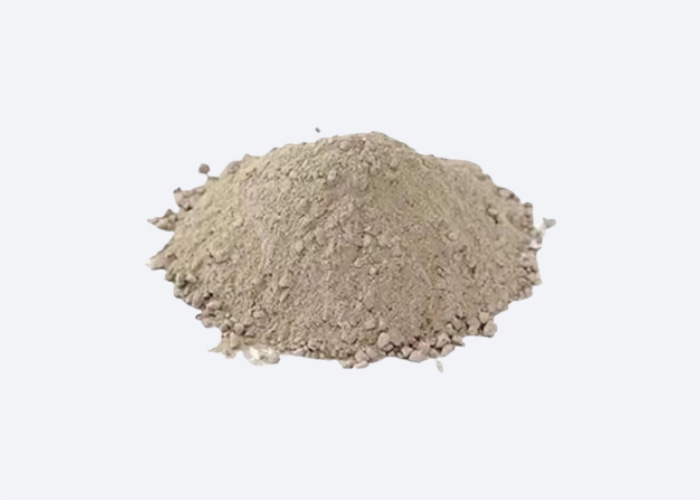Description of Refractory Dry Vibrating Material Aluminum Silicate Ramming Mass
Aluminum silicate ramming material is a specialized refractory material renowned for its exceptional heat resistance and suitability for applications requiring high-temperature stability. Composed primarily of aluminum silicate minerals, this material is carefully formulated to withstand extreme thermal conditions.
Due to its unique composition, aluminum silicate ramming material exhibits outstanding resistance to thermal shock and erosion, making it an excellent choice for lining induction furnaces, electric arc furnaces, and other high-temperature equipment. Its ability to maintain structural integrity even under intense heat ensures reliable and prolonged performance.
One of the key advantages of this material lies in its ease of installation using a ramming method, allowing for precise and efficient lining of refractory structures. Additionally, aluminum silicate ramming material offers good workability, enabling it to conform to intricate shapes and contours.
Features of Aluminum Silicate Ramming Mass
1.On the face in contact with liquid metal there is a dense sintered layer where tightness of liquid metal is quite perfect.
2.Thermal conductivity is lower than other refractoriness so the Thermal loses are less than any other kind of refractory.
3.Good resistance to temperature change.
4.Low cost in furnace lining.
5.Short heating and sintering time through dry preparation Of masses.
6. Strong resistance to erosion.
Applications of Aluminum Silicate Ramming Mass
Ramming Mass mainly used for furnace lining of boiler, blast furnace, hot blast stove, heating furnace, ceramic kiln and various industrial furnaces.Applicable to all kinds of carbon steel, low manganese steel, alloy steel, alloy cast iron, high-speed tool steel and stainless steel.
Specification of Aluminum Silicate Ramming Mass
Aluminum-magnesia ramming material, high-alumina (or corundum) – silicon carbide – carbon ramming material, alkali refractory ramming material and zirconium mullite ramming material.
| Article | Alumina-Silicon | Silicon- Carbide | Zirconium Chrome Corundum | ||||
| KSL-1 | KSL- | KSL- | KSL- | KSL- | KSL- | KSL- | |
| Al2O3 % | ≥65 | ≥75 | ≥85 | / | / | / | ≥80 |
| SiC % | / | / | / | ≥40 | ≥60 | ≥70 | / |
| Cr2O3 % | / | / | / | / | / | / | ≥3 |
| ZrO2 % | / | / | / | / | / | / | ≥2 |
| Bulk Density g/cm3 110℃×24h | ≥2.5 | ≥2.7 | ≥2.8 | ≥2.4 | ≥2.5 | ≥2.6 | ≥2.8 |
| Permanent Linear Change Rate % 1000℃×3h | -0.4~0 | -0.5~0 | -0.5~0 | -0.4~0 | -0.5~0 | -0.6~0 | -0.6~0 |
| Cold Crushing strength MPa 1000℃×3h |
≥70 | ≥80 | ≥90 | ≥60 | ≥70 | ≥80 | ≥90 |
| Wear resistance at room temperature cm3 1000℃×3h | ≤7 | ≤6 | ≤5 | ≤7 | ≤6 | ≤5 | ≤5 |
| Thermal shock resistance 1000℃ water cooling cycle 1000℃×3h Fired | ≥30 | ≥30 | ≥25 | ≥30 | ≥35 | ≥40 | ≥30 |
| Plasticity Index % | 15~55 | ||||||
| Thermal conductivity W/(m·K) 1000℃ | 1.1~1.6 | 1.6~2.0 | 3~5 | 5~7 | 6~8 | 2~3 | |

